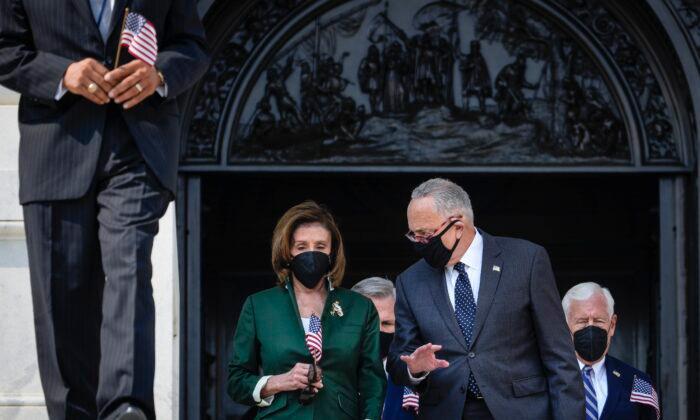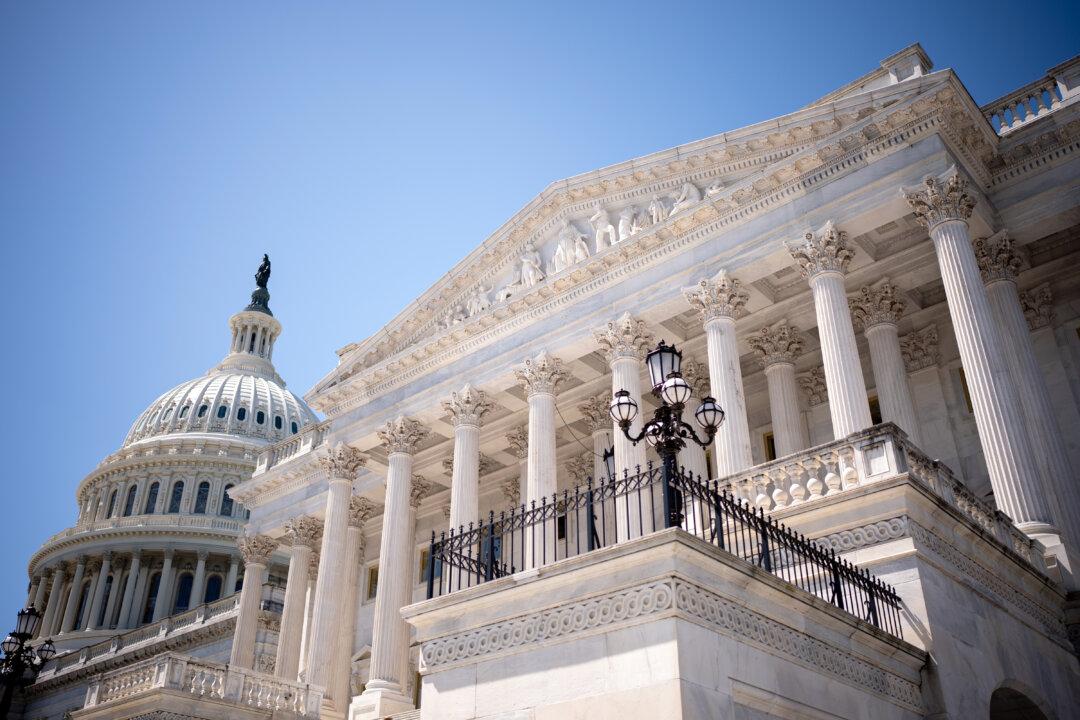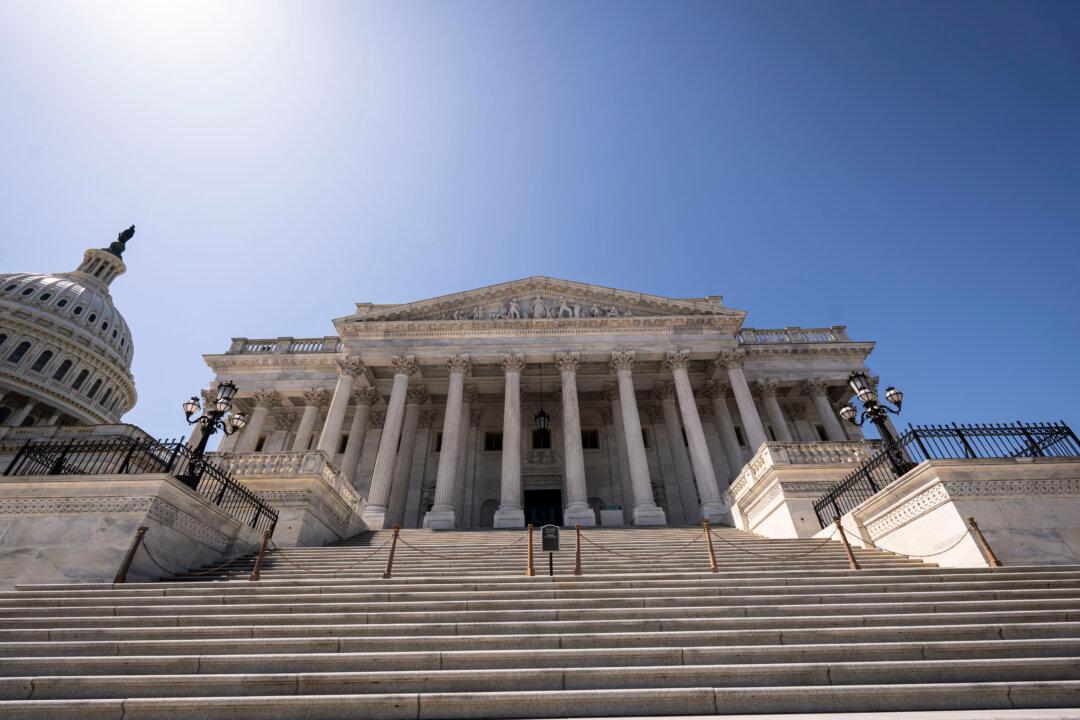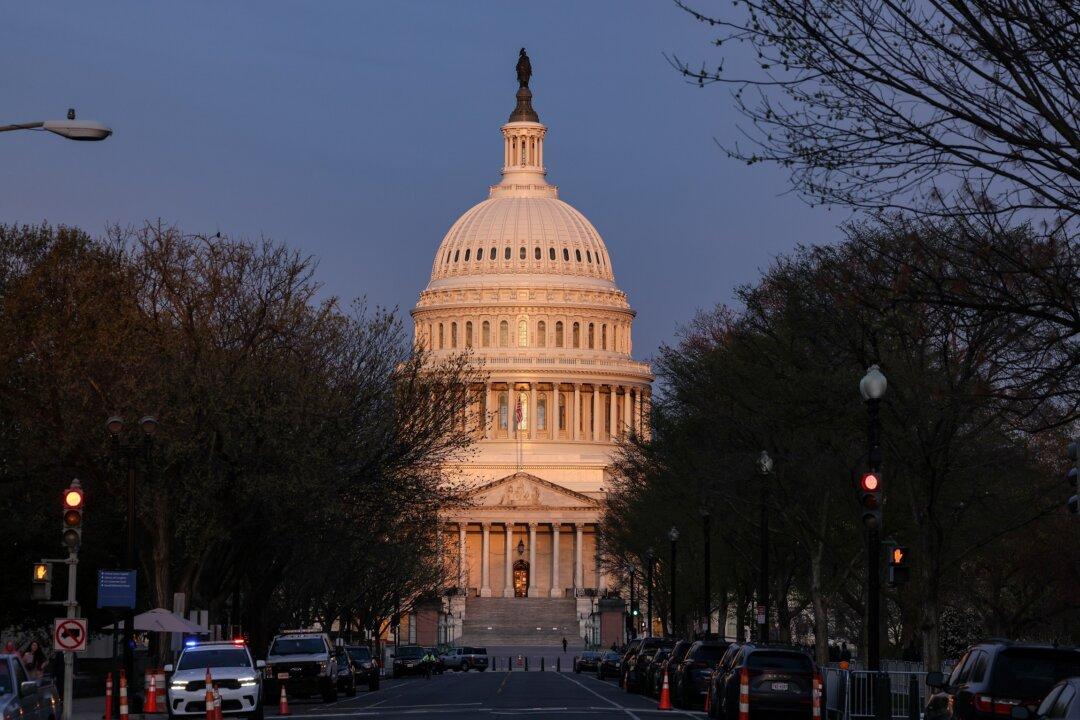As the United States inches ever-closer towards a default, Republicans continue to insist that Democrats raise the debt ceiling on their own through reconciliation. Most Democrats, including leadership, have rejected using reconciliation to raise the debt ceiling, but others in the caucus have demanded that the reconciliation process be used to avert a default.
The ongoing situation began in August after 46 Senate Republicans pledged not to support a debt ceiling increase in a petition created by Sen. Ron Johnson (R-Wis.), accusing Democrats of “an unprecedented deficit spending spree” since they took the majority in January.
Prominent Dems Speak Against Course Demanded by Republicans
This route has been thoroughly rejected by many Democrats, including leaders in both the House and the Senate.Since then, Democrats have instead tried to address the debt ceiling by means of normal legislation.
Because of their House majority, these bills passed relatively easily throughout the lower chamber. However, Democrats lack a supermajority in the Senate, giving Republicans a chance to easily filibuster the bills. After the filibuster of the first bill sent to them by the House, Senate Republicans threatened to do the same for any other non-reconciliation debt limit increase.
Still, Democrats remained adamantly opposed to this course of action.
At a Sept. 28 press conference, Schumer told reporters that “Going through reconciliation is risky to the country and is a non-starter,” adding that using reconciliation to raise the debt limit is “very, very risky.”
“We’re not pursuing that,” Schumer concluded.
Threat of Republican Vote-a-Rama, Delays Make Reconciliation ‘Impossible’: Senate Banking Committee Chair
Sen. Sherrod Brown (D-Ohio), chairman of the Senate Banking Committee, explained the Democrats’ refusal. “It’s impossible to do [reconciliation] now,” said Brown. “There’s too many pitfalls, it takes too long.”Sen. Elizabeth Warren (D-Mass.) said the same, arguing that reconciliation cannot be used because time is too short.
Because reconciliation bills cannot be filibustered, making them a powerful tool for the majority party, they must comply with a slew of rules and restrictions. One such restriction, known as “vote-a-rama,” can draw out the reconciliation process for hours or days.
For most bills, Senate leaders can use a slew of procedural maneuvers to avoid voting on each and every proposed amendment. Not so with reconciliation: Under the rules of the reconciliation process, every single amendment must be voted on.
This rule allows the minority party to slow the passage of the bill. Each amendment vote takes around 15 minutes. This includes time for the amendment’s sponsor to introduce and explain the amendment, time for a short two minutes (or so) of debate, and ten minutes for voting.
Earlier in the year, Senate Republicans subjected Democrats’ American Rescue Plan reconciliation bill to a two-days-long vote-a-rama, putting forward a slew of amendments touching on issues from high-tech aircraft grants for the Coast Guard to restricting federal funding to schools that allow biologically male transgender students to play on girls’ athletics teams.
Democrats Look to ‘Nuclear Option’ as an Alternative to Reconciliation
Rather, Democrats have looked to address the crisis by using the so-called “nuclear option.”This rarely-used parliamentary maneuver allows the majority to change the standing rules in the Senate, and can allow them to change which types of legislative proceedings can and cannot be filibustered. These changes to the filibuster are also called a filibuster “carve-out.”
Republicans used the process at the end of 2020 to confirm Amy Coney Barrett for the Supreme Court over stiff Democratic opposition.
However, the nuclear option is unlikely to be successful without a significant change of heart across several senators. Sens. Joe Manchin (D-W. Va.), Kyrsten Sinema (D-Ariz.), and Dianne Feinstein (D-Calif.) have all rejected changing or abolishing the filibuster in the past.
Manchin maintains this position, telling reporters on Oct. 4 that he would not support the use of the nuclear option even for raising the debt ceiling.
Some Democrats Demand Debt Ceiling Increase by All Available Means
Still, a very small minority of the party, including Manchin himself, is open to using reconciliation.The West Virginia Democrat told reporters “We shouldn’t rule out anything [including reconciliation]. We just can’t let the debt ceiling lapse, we just can’t.”
Peters urged Biden “to start reconciliation immediately, even as we explore other avenues.” He ruled “This may be our only way to avoid default.”
McConnell said on the Senate floor that his deal was made exclusively to give the majority time to use the reconciliation process, and emphasized that Republicans would stand steadfast against any other avenue to raising the debt ceiling, but so far Democrats have not given any indication that this avenue is being explored.
Despite calling for his party to submit to the wishes of the minority party, Peters accused McConnell of turning “what was once a nonpartisan issue into a bitter and deeply dangerous political fight.”
In fact, during times of unified party governments, the minority party has often used the debt ceiling to play political hardball. During the second term of President George W. Bush, then-Senator Biden joined his party in voting unanimously against raising the debt ceiling, forcing Republicans to provide nearly all the votes to raise the debt limit.
Still, Manchin and Peters are a small minority in their party, which has almost entirely aligned against reconciliation.
“There’s not going to be reconciliation,“ promised Senate Budget Chair Bernie Sanders (I-Vt.). Sen. Tammy Duckworth (D-Ill.) vowed that her party would ”never” raise the debt limit through reconciliation.
The clock is ticking for an alternative solution to the problem. If the debt ceiling is not raised through reconciliation, Democrats will have to either carve out the filibuster, which Manchin has indicated he will block, make a deal with Republicans not to filibuster a non-reconciliation bill, or let the country default.





